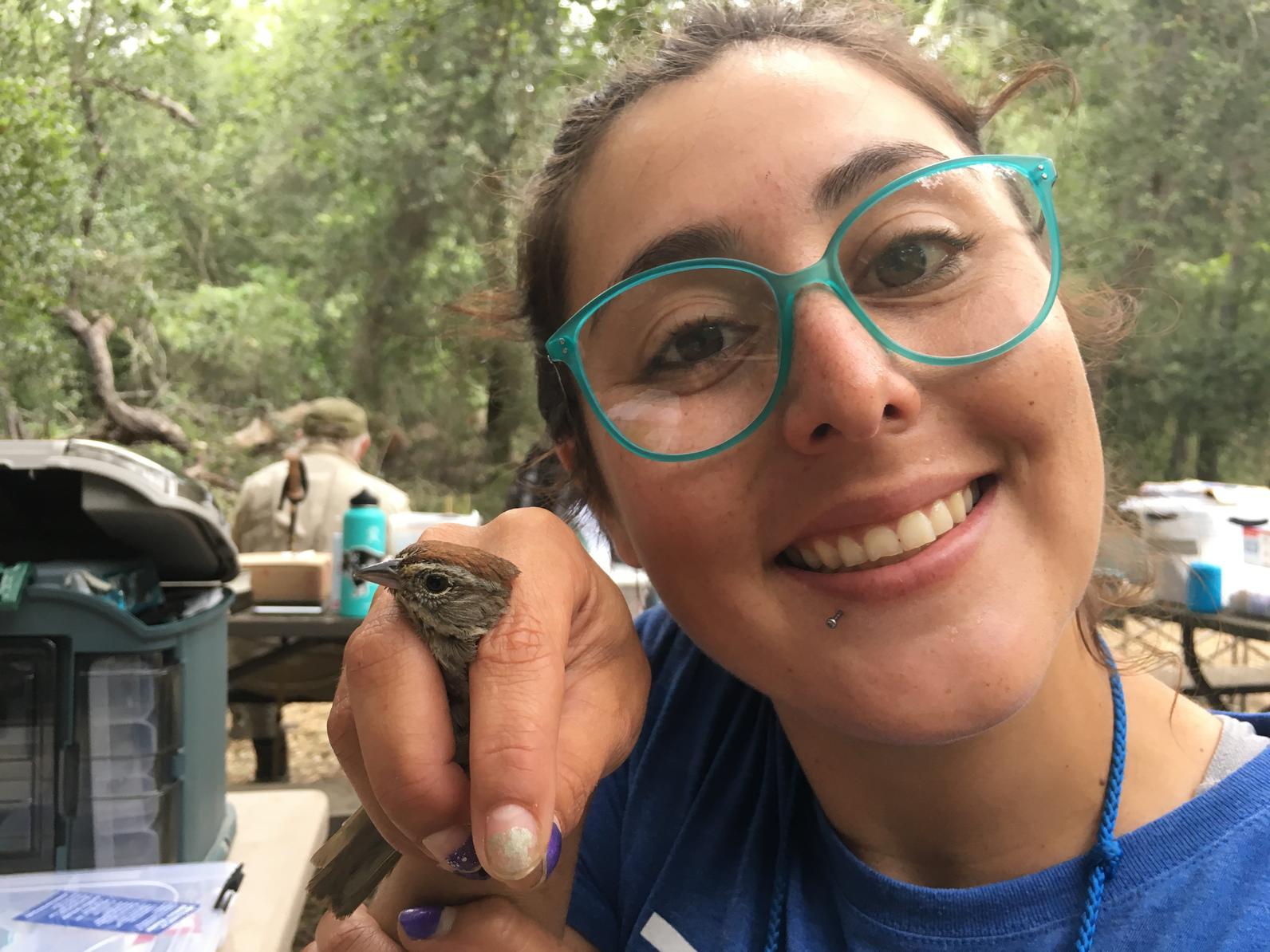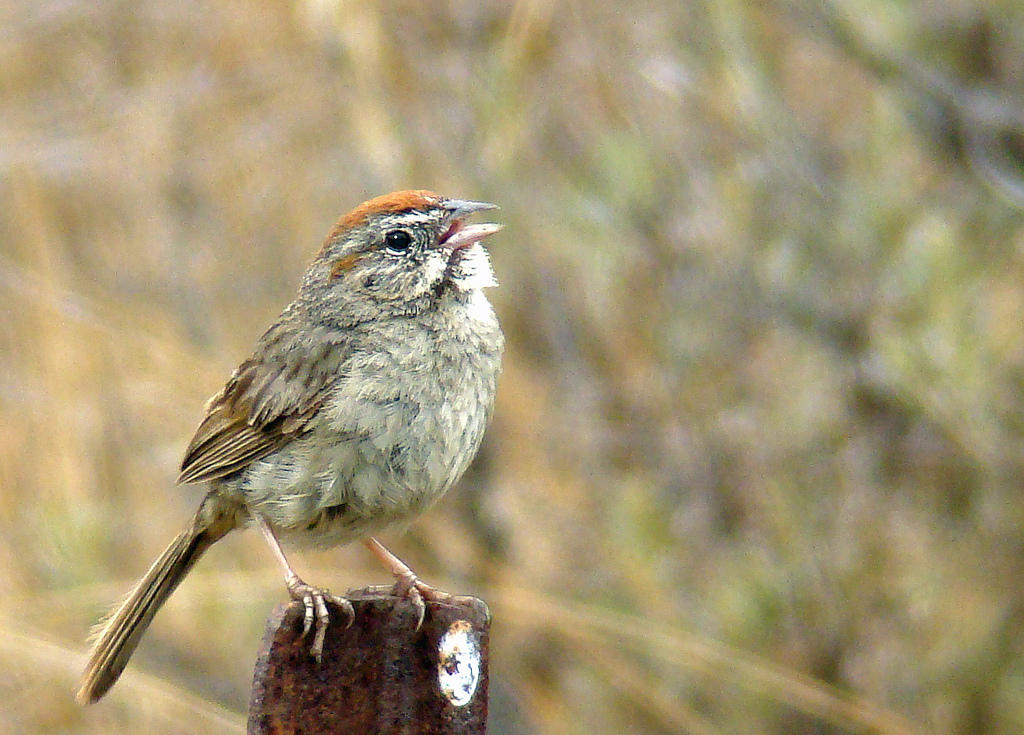
Bird banders at the Audubon Starr Ranch Sanctuary in Orange County last week were surprised to discover in their nets the oldest-known Rufous-crowned Sparrow on record in North America (its worldwide range). This male was originally banded on June 24, 2011 as a hatch-year bird, making him six years old.
“I’m happy to report that this bird was in breeding condition and seemed to be in great shape,” said Starr Ranch ornithologist Kayla Baker.
According to the Bird Banding Laboratory’s records, the longevity record for this species was first set in 2005 by a 5-year-old male captured in New Mexico.
According to Baker, Rufous-crowned Sparrows at Starr Ranch are shy resident birds preferring to inhabit moderately steep coastal sage scrub slopes where they don’t often venture out from the cover of dense shrubs or high grasses. Their habitat preferences and elusive behavior make them particularly difficult to study.
Widespread loss of coastal sage scrub throughout southern California has made this species’ distribution very localized, with small, isolated populations occurring across the region. Generally speaking, isolated populations face restricted gene flow and lower genetic diversity than continuous populations which lowers individual fitness and leaves the population vulnerable to disease and extinction.

“The fact that this individual was recaptured in the exact same location as it was originally captured in in 2011 (net 15) suggests that this bird has been defending the same territory for over half a decade,” said Baker. “Now, let’s imagine that his territory is destroyed. Where does this individual disperse to? Neighboring suitable habitat will presumably have already be taken up by other territorial individuals and our bird will have to either fight for his place or keep searching for vacant territories. This all comes at a significant energetic cost and our bird still hasn’t even bred yet. If several individuals face this dilemma, we can start to see the effects at the population level.”
As development pressures in Orange and Los Angeles counties continue to present challenges to wildlife, this bird provides an opportunity to highlight the importance of conserving large, continuous blocks of coastal sage scrub habitat, such as those found at the Audubon Starr Ranch, to ensure the persistence of this species (and others) into the future.
By Garrison Frost
Monthly Giving
Our monthly giving program offers the peace of mind that you’re doing your part every day.




